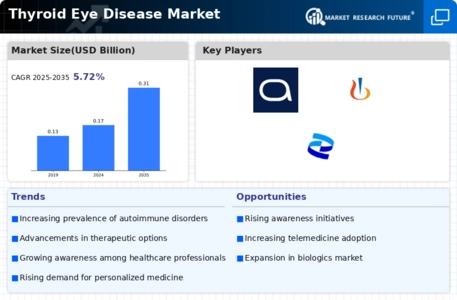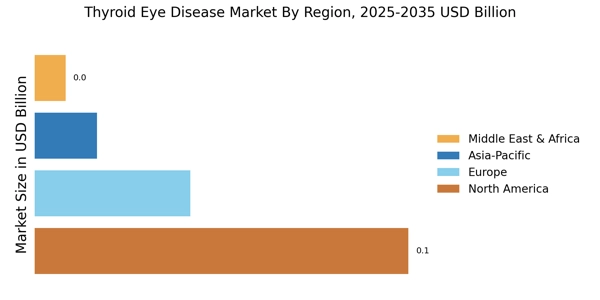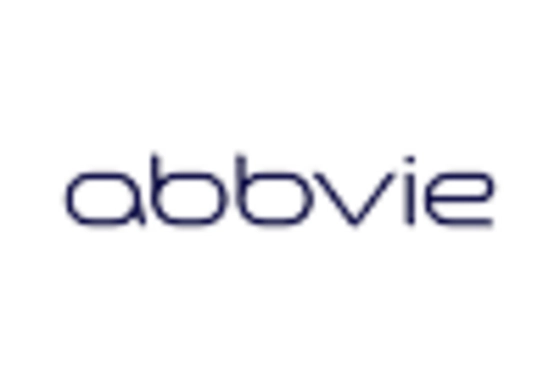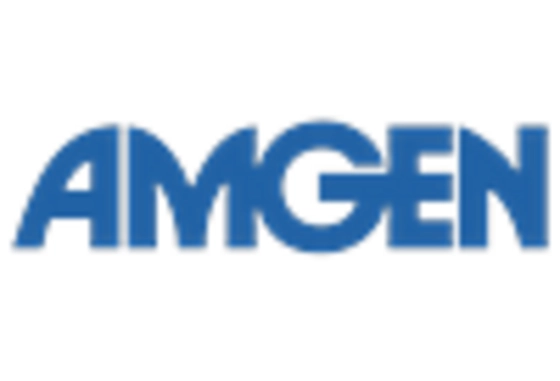Innovations in Treatment Modalities
Innovations in treatment modalities are significantly influencing the Thyroid Eye Disease Market. The introduction of novel therapies, including monoclonal antibodies and surgical interventions, has transformed the management of thyroid eye disease. For instance, teprotumumab, a monoclonal antibody, has shown promising results in clinical trials, leading to its approval for use in patients with moderate to severe disease. This advancement not only enhances patient outcomes but also expands the therapeutic options available, thereby attracting more patients to seek treatment. The ongoing research into additional treatment options is expected to further bolster the Thyroid Eye Disease Market, as healthcare providers aim to offer personalized care tailored to individual patient needs.
Increased Focus on Patient Education
Increased focus on patient education is emerging as a key driver in the Thyroid Eye Disease Market. As healthcare providers emphasize the importance of understanding thyroid eye disease, patients are becoming more informed about their condition and treatment options. Educational initiatives, including workshops and online resources, are helping to raise awareness and encourage early diagnosis. This heightened awareness is likely to lead to an increase in patient consultations and treatment-seeking behavior, thereby expanding the market. Additionally, as patients become more knowledgeable, they may advocate for better treatment options, further influencing the dynamics of the Thyroid Eye Disease Market.
Regulatory Support for New Therapies
Regulatory support for new therapies is playing a crucial role in shaping the Thyroid Eye Disease Market. Regulatory agencies are increasingly expediting the approval process for innovative treatments, recognizing the urgent need for effective options in managing thyroid eye disease. This supportive environment encourages pharmaceutical companies to invest in research and development, leading to a pipeline of new therapies that could enter the market. The potential for faster access to novel treatments not only benefits patients but also stimulates competition among manufacturers, which may result in more affordable options. As a result, the Thyroid Eye Disease Market is likely to experience robust growth driven by the introduction of new and effective therapies.
Rising Incidence of Thyroid Eye Disease
The Thyroid Eye Disease Market is experiencing growth due to the increasing incidence of thyroid eye disease, which is often associated with autoimmune disorders such as Graves' disease. Recent estimates suggest that the prevalence of thyroid eye disease may be as high as 16% among patients with Graves' disease. This rising incidence is prompting healthcare providers to seek effective treatment options, thereby driving demand within the Thyroid Eye Disease Market. As awareness of the condition grows, more patients are being diagnosed, leading to an increased need for specialized therapies and interventions. Consequently, pharmaceutical companies are investing in research and development to address this unmet medical need, which is likely to further stimulate market growth.
Growing Investment in Healthcare Infrastructure
The Thyroid Eye Disease Market is benefiting from the growing investment in healthcare infrastructure across various regions. Enhanced healthcare facilities and improved access to specialized care are facilitating better diagnosis and treatment of thyroid eye disease. Governments and private entities are increasingly allocating resources to upgrade medical facilities, which is likely to improve patient outcomes. Furthermore, the establishment of specialized clinics dedicated to endocrine disorders is becoming more common, providing patients with targeted care. This trend is expected to drive the Thyroid Eye Disease Market as more patients gain access to advanced diagnostic tools and treatment options, ultimately leading to higher demand for effective therapies.


















Leave a Comment